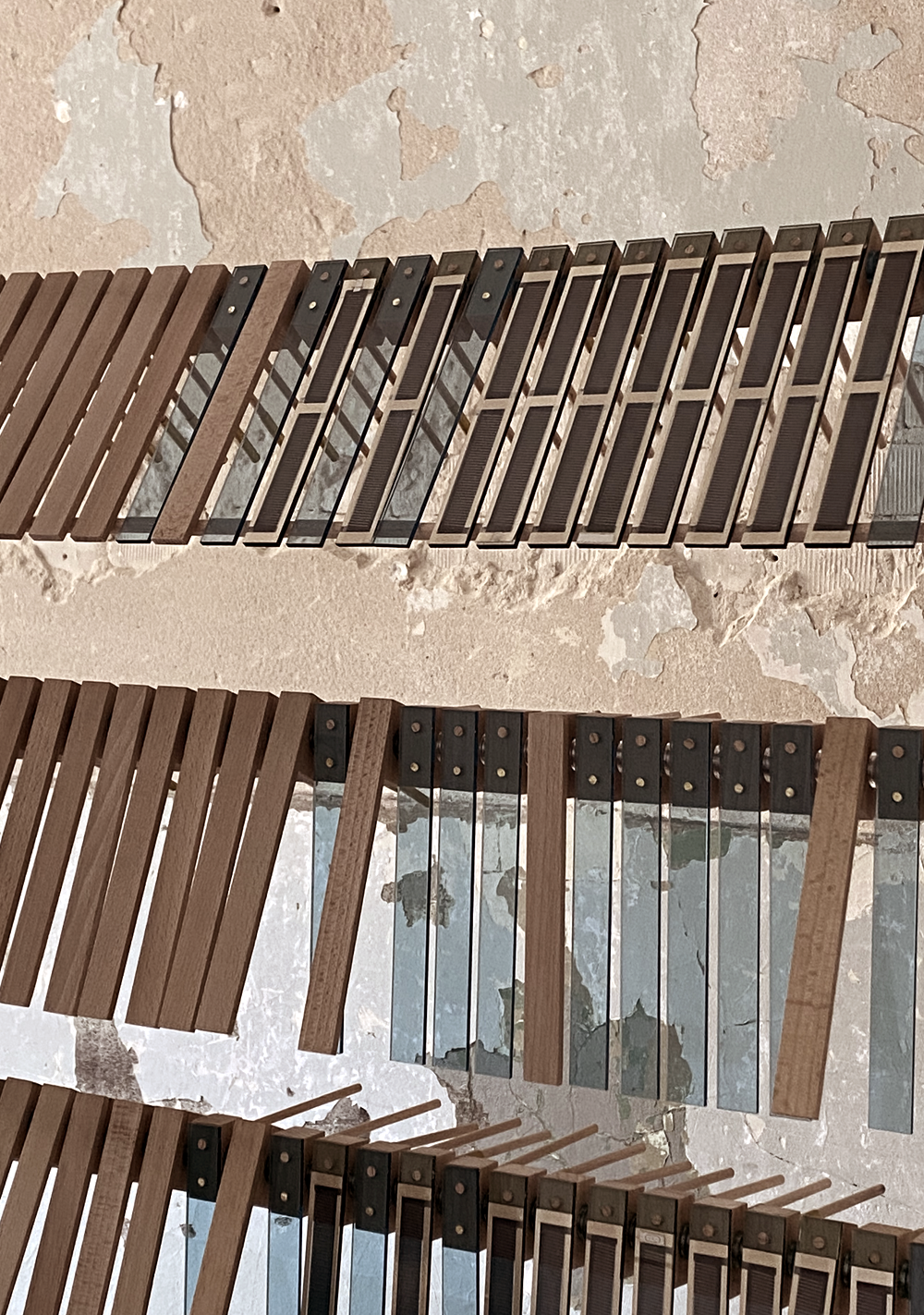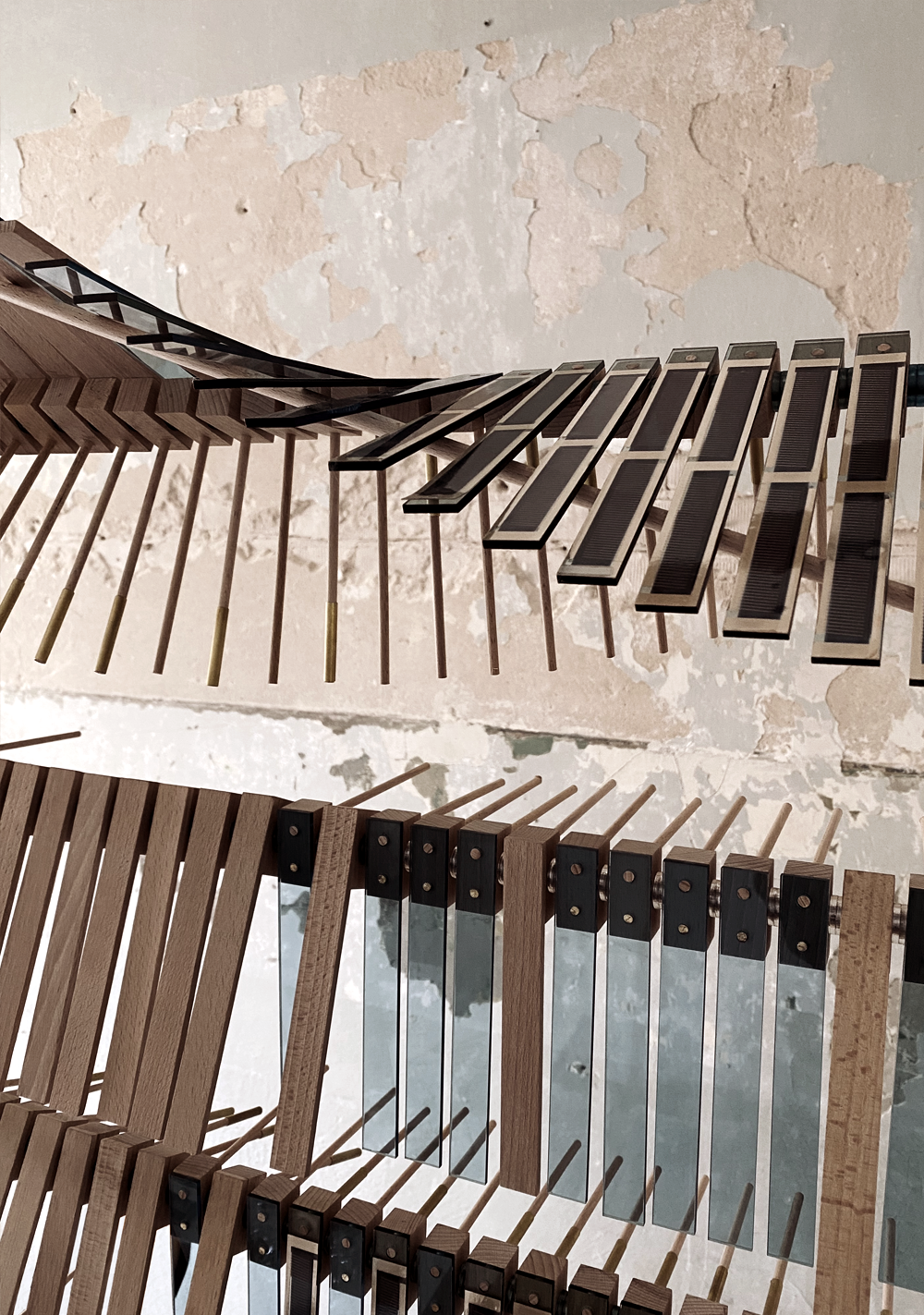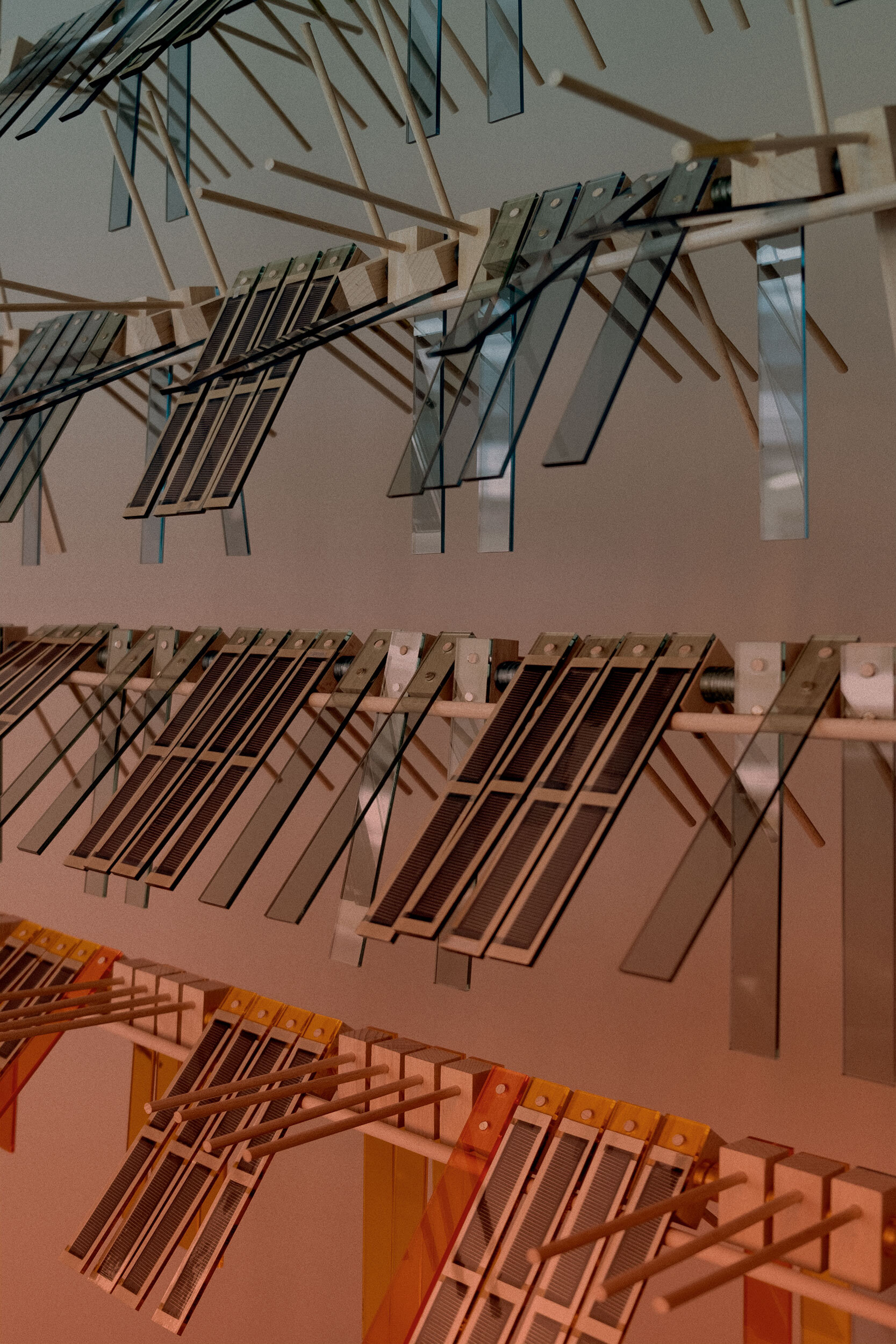– An intro to Moving Light
Adaptive shading systems can increase energy savings in buildings by regulating internal temperatures directly on the building envelope. Passive shading reduces the need for mechanical cooling systems and lowers operational carbon emissions.
Moving Light is such a system, designed as a programmable, kinetic surface, able to react to changes in sun radiation throughout the day and the seasons. Installed on a facade, it can limit the amount of sunlight entering a building through opening and closing movements.




























